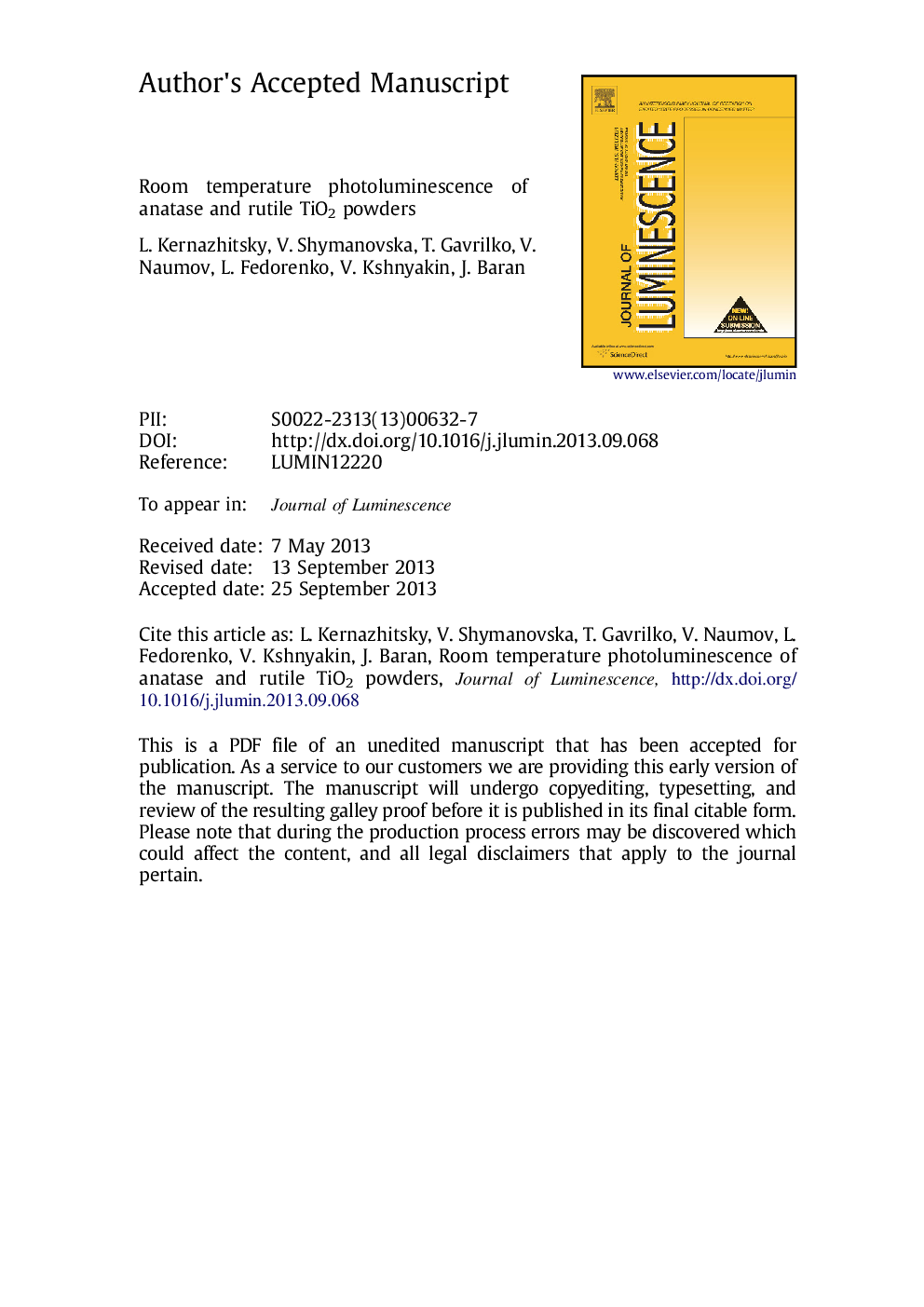| Article ID | Journal | Published Year | Pages | File Type |
|---|---|---|---|---|
| 5400326 | Journal of Luminescence | 2014 | 24 Pages |
Abstract
The optical absorption and photoluminescence of anatase and rutile TiO2 were studied at room temperature. TiO2 nanocrystalline powders were synthesized in the form of pure anatase or rutile. The samples were characterized by X-ray diffraction, X-ray fluorescence, Raman spectroscopy, optical absorption and photoluminescence (PL) methods. The PL spectra were studied under the intensive UV (3.68Â eV) laser excitation. Some interesting features in the PL spectra including the well-resolved peaks of excitonic and band-band transitions in TiO2 were observed, to our knowledge, for the first time. It is shown that PL bands including peaks at 2.71-2.81Â eV and its phonon replicas in anatase and rutile TiO2 arise from the excitonic eââh+ recombination via oxygen vacancies. The excitonic peak at 2.91Â eV is attributed to the recombination of self-trapped excitons in anatase or free excitons in rutile TiO2. The PL peaks within 3.0-3.3Â eV in anatase TiO2 are ascribed to indirect allowed transitions due to the band-band eââh+ recombination. The peaks at 3.03Â eV and 3.26Â eV are attributed to the free exciton emission near the fundamental band edge of rutile and anatase TiO2, respectively. The influence of TiO2 crystal structure and calcination temperature on the PL spectra is discussed.
Related Topics
Physical Sciences and Engineering
Chemistry
Physical and Theoretical Chemistry
Authors
L. Kernazhitsky, V. Shymanovska, T. Gavrilko, V. Naumov, L. Fedorenko, V. Kshnyakin, J. Baran,
